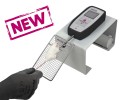Authors
SeoYul Jo; Hyeongjin Lee; Yunju Jo; Eun-Ju Jin; Dongyun Kim; Dongryeol Ryu; Geun Hyung Kim
Lab
Sungkyunkwan University School of Medicine, Corea
Journal
Applied Physic Reviews
Abstract
A biocomposite for enhancing muscle tissue regeneration was introduced using decellularized fish skins. Decellularized tilapia and cod skin were explored as constituents of the composite and compared with the conventionally used decellularized extracellular matrix (dECM) derived from porcine skin tissue. As a cell-laden bioink for 3D bioprinting, the choice of tilapia skin dECM, which possesses remarkable printability, allows for precise three-dimensional (3D) structure fabrication. Meanwhile, cod skin dECM was selected as the dispersed phase for enhancing biological activities because of its omega-3 unsaturated fatty acid, which is known to promote angiogenesis and is crucial for nutrient supply during tissue regeneration and lower inflammation. Through meticulous compositional optimization of the fish skin dECMs, efficient printability and high myogenic activity of the fish skin dECM composite were attained. In vitro evaluations using adipose stem cells clearly demonstrated the support of the cell-laden composite bioink for myogenesis, as determined by various cellular activities, including myogenic genes, compared to those of the porcine-based dECM bioink. The regenerative potential of the composites was validated using an in vivo mouse model of volumetric muscle loss. Based on these results, this study provides valuable insights into the use of decellularized fish skin as composite biomaterials and demonstrates their distinct advantages in muscle tissue engineering, in terms of both printability and bioactivity induction.
BIOSEB Instruments Used:
Grip strength test (BIO-GS4)

 Pain - Thermal Allodynia / Hyperalgesia
Pain - Thermal Allodynia / Hyperalgesia Pain - Spontaneous Pain - Postural Deficit
Pain - Spontaneous Pain - Postural Deficit Pain - Mechanical Allodynia / Hyperalgesia
Pain - Mechanical Allodynia / Hyperalgesia Learning/Memory - Attention - Addiction
Learning/Memory - Attention - Addiction Physiology & Respiratory Research
Physiology & Respiratory Research
 Pain
Pain Central Nervous System (CNS)
Central Nervous System (CNS) Neurodegeneration
Neurodegeneration Sensory system
Sensory system Motor control
Motor control Mood Disorders
Mood Disorders Other disorders
Other disorders Muscular system
Muscular system Joints
Joints Metabolism
Metabolism Cross-disciplinary subjects
Cross-disciplinary subjects Preclinical studies and opioids: role in crisis management in the United States
Preclinical studies and opioids: role in crisis management in the United States 